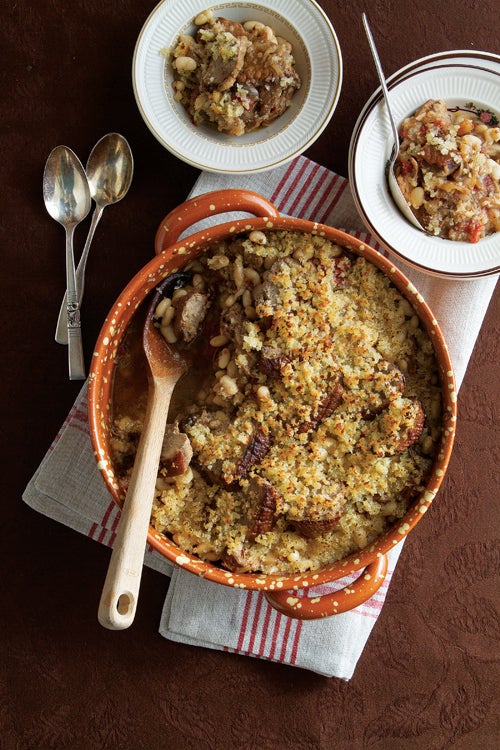Cassoulet
Cassoulet is a rich, slow-cooked stew originating in southern France. The food writer Elizabeth David described it as "that sumptuous amalgamation of haricot beans, sausage, pork, mutton and preserved goose, aromatically spiced with garlic and herbs". It originated in the town of Castelnaudary in the Aude department in the Occitanie region. Variants of the dish are local to other towns and cities in the Aude. According to tradition, cassoulet was invented in 1355 in the town of Castelnaudary, under siege by the English during the Hundred Years' War.[n 1] In medieval times the dish was referred to as an estouffet. The Dictionnaire de l'Académie française dates the term cassoulet to no earlier than the 19th century. The current name is a diminutive of the Languedoc cassolo – a cooking pot – according to the Dictionnaire de l'Académie française; Elizabeth David states that it comes from "Cassol d'Issel", the original clay baking pot made in the small town of Issel, near Castelnaudary. In cassoulets, the haricot bean is now always the principal ingredient. In the medieval period, broad beans (favolles), fresh or dried, were used in stews of the cassoulet type. Sources differ on when haricots were first used instead of favolles: the Oxford Companion to Food states that haricots arrived in France via Spain from the New World in the 16th century; according to Larousse Gastronomique they were not used in France until the 19th century.
Source: Wikipedia
Recipes

:max_bytes(150000):strip_icc()/20230724-SEA-TraditionalFrenchCassoulet-FredHardy-001-498130da7d5f4023b0bc50f631c891e0.jpg)
:max_bytes(150000):strip_icc()/200510-r-xl-toulouse-style-cassoulet-2ce19601a3b1469090ba210356283dcc.jpg)

